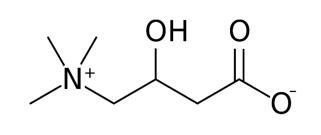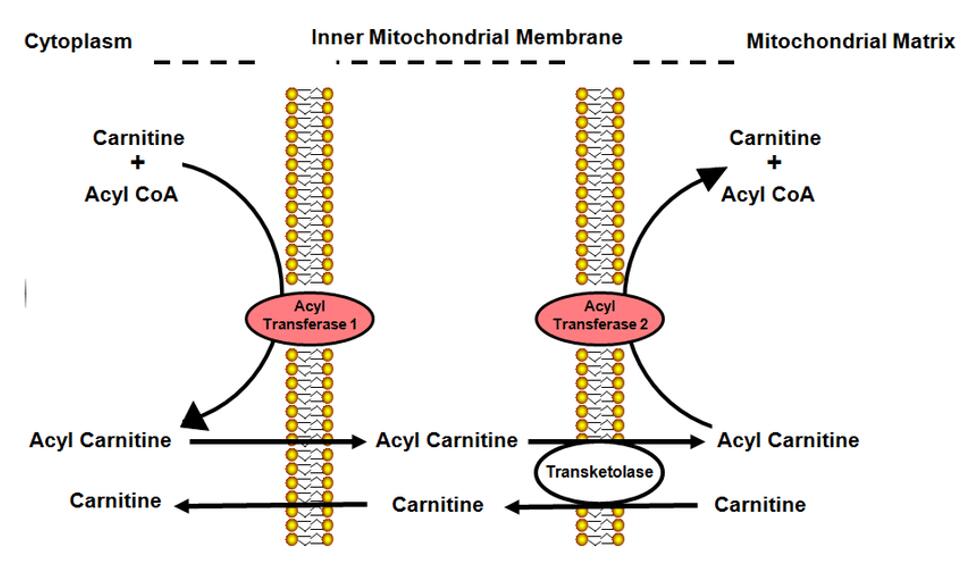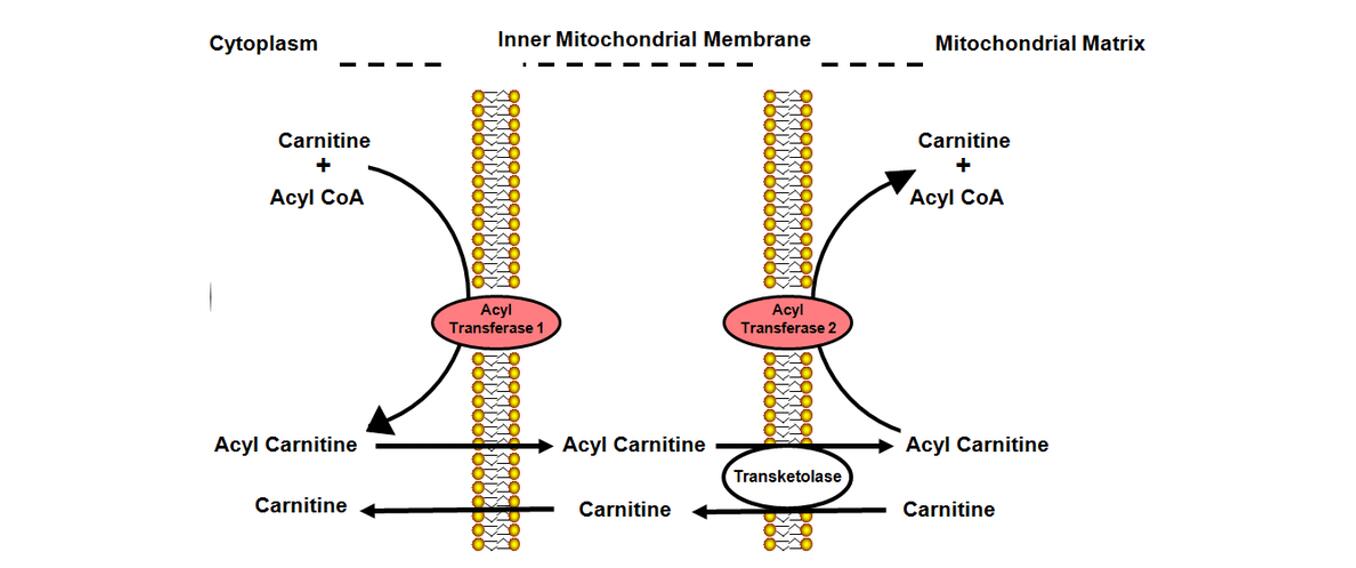Carnitine (L-3hydroxy-4-trimethylaminobutyric acid), a water-soluble tetramine compound, is mainly distributed in tissues with high energy requirements, such as skeletal muscle and cardiac muscle. 75% of carnitine is consumed through diet, such as meat, fish and dairy products, and 25% is synthesized in the kidney and liver from lysine and methionine. However, the organism's low carnitine diet stimulates the body to produce more endogenous carnitine. Acylcarnitine is an ester of carnitine combined with fatty acid or amino acid metabolites. According to the amount of carbon atoms contained in the acylated group, acylcarnitine is divided into short chain (4 ~ 6 carbon), medium chain (8 ~ 12 carbon) and long chain (14 carbon or more) acylcarnitine.

Functional effects of carnitine and acylcarnitine
Both carnitine and acylcarnitine are essential for intracellular energy metabolism, and their physiological roles include the following:
(1) Carnitine serves as the sole carrier of long-chain fatty acids, which are transferred to the cellular mitochondria for β-oxidation. The fatty acids are activated in the cytosol to form lipid acyl CoA prior to oxidation. activated lipid acyl CoA enters the mitochondria. Lipid acyl CoA is bound to carnitine by carnitine palmitoyltransferase I (CPT I) to form acyl carnitine. The acyl carnitine enters the mitochondrial inner membrane matrix across the membrane by the action of carnitine lipoyl carnitine translocase. The acyl carnitine is then converted to acyl CoA by the action of carnitine palmitoyltransferase II (CPT II), which leads to β-oxidation.

Role of carnitine in transport of fatty acids (Waly et al., 2013)
(2) Carnitine is a regulator of the balance between free CoA and acyl CoA inside and outside the cell. In metabolic dysregulation, carnitine can remove toxic acyl CoA accumulated in the body. impaired fatty acid β-oxidation metabolism and impaired branched-chain amino acid metabolism can lead to the accumulation of large amounts of acyl CoA. Carnitine binds to these acyl CoA to form acyl carnitine and is excreted, while releasing free CoA to maintain sufficient free CoA in the body.
Detection of carnitine and acylcarnitine
Carnitine and acylcarnitine are jointly involved in fatty acid β-oxidation metabolism and branched-chain amino acid metabolism. When disorders of fatty acid β-oxidation metabolism and abnormalities of branched-chain amino acid metabolism occur, characteristic alterations of one or more acyl carnitines occur. Therefore, most of the disorders of fatty acid β-oxidation metabolism and some of the disorders of abnormal branched-chain amino acid metabolism can be detected by measuring the levels of acyl carnitine in different lengths of carbon chains.
Due to the presence of different lengths of acyl chains and tautomers, there is a wide variety of acylcarnitines. Creative Proteomics has established a liquid chromatography-high resolution mass spectrometry (LC-HRMS) analytical method. It analyzes mixed biological samples in full scan/data-dependent secondary mass spectrometry data acquisition mode (Full MS/ddMS2) and is capable of analyzing more than one hundred acylcarnitines.
Reference
Waly, Mostafa. (2013). Metabolic aspects of macronutrients.
